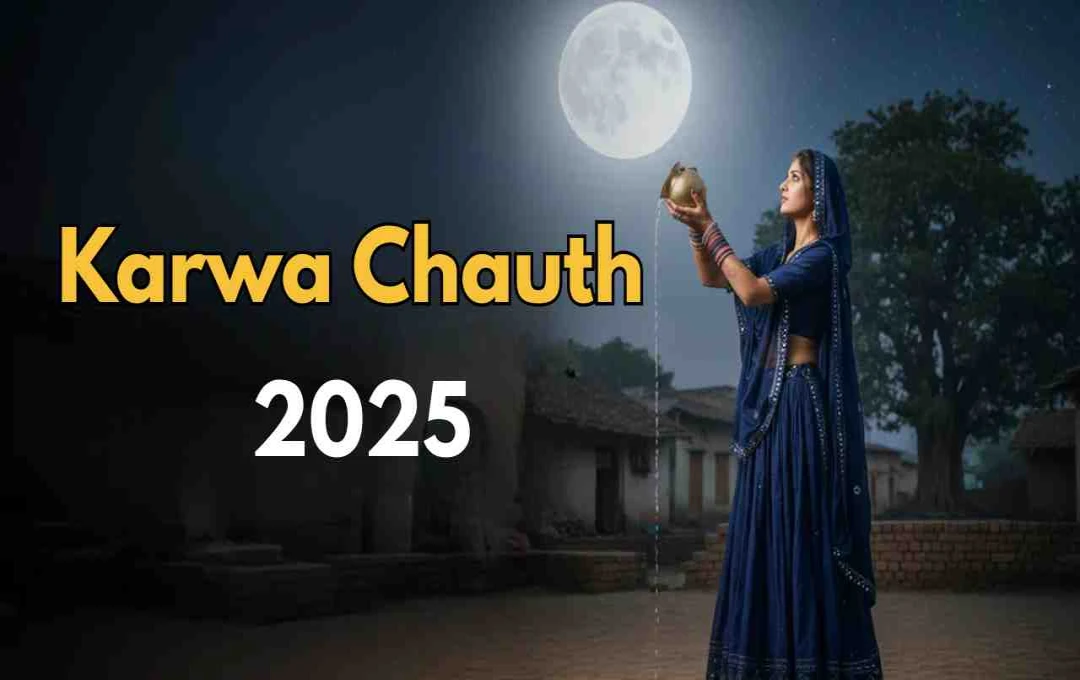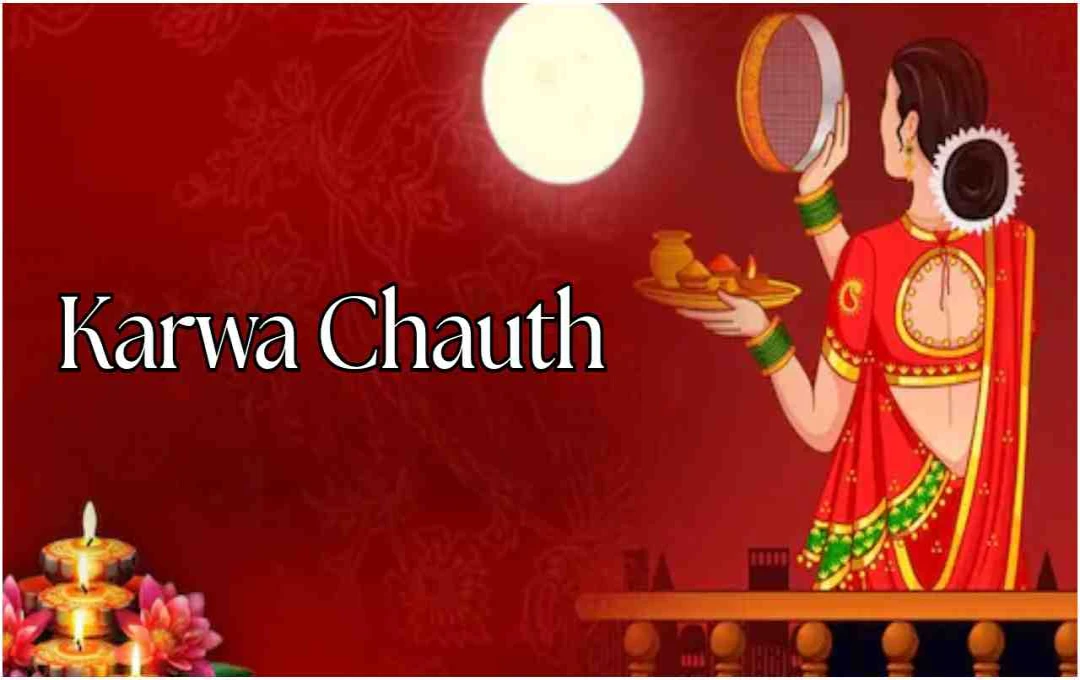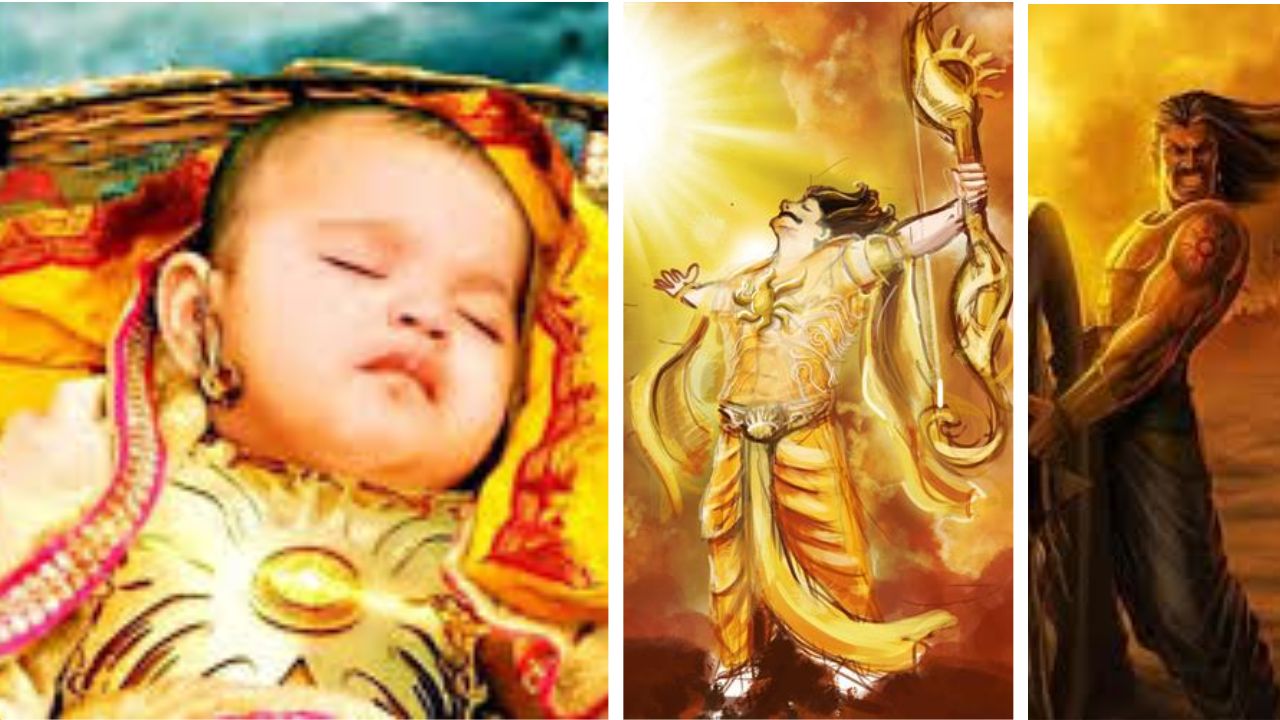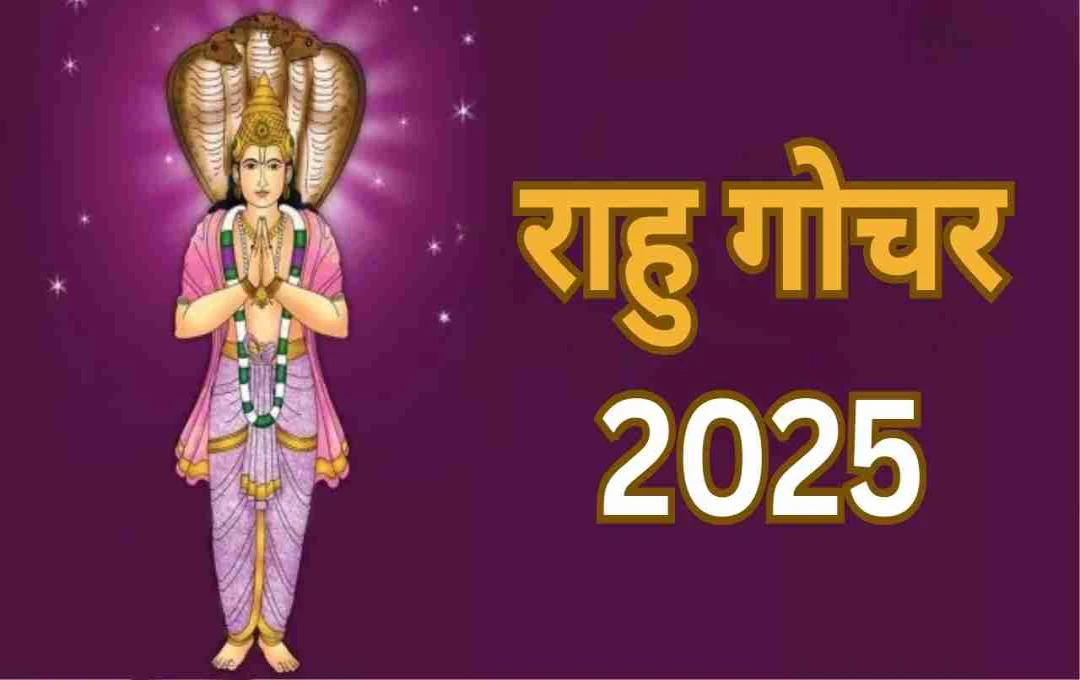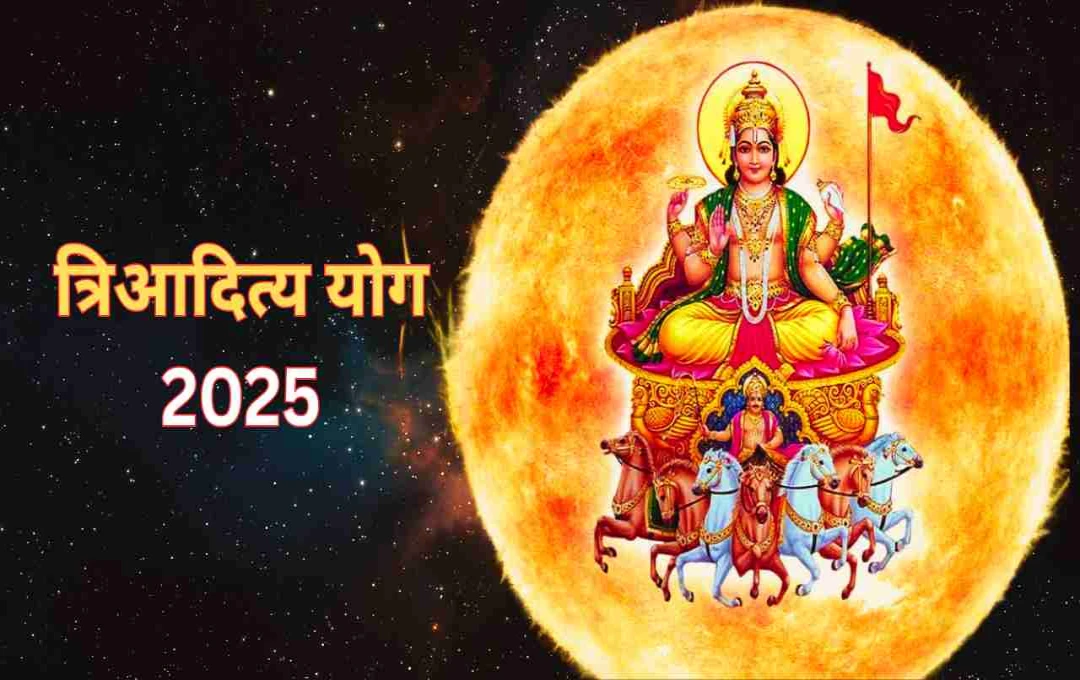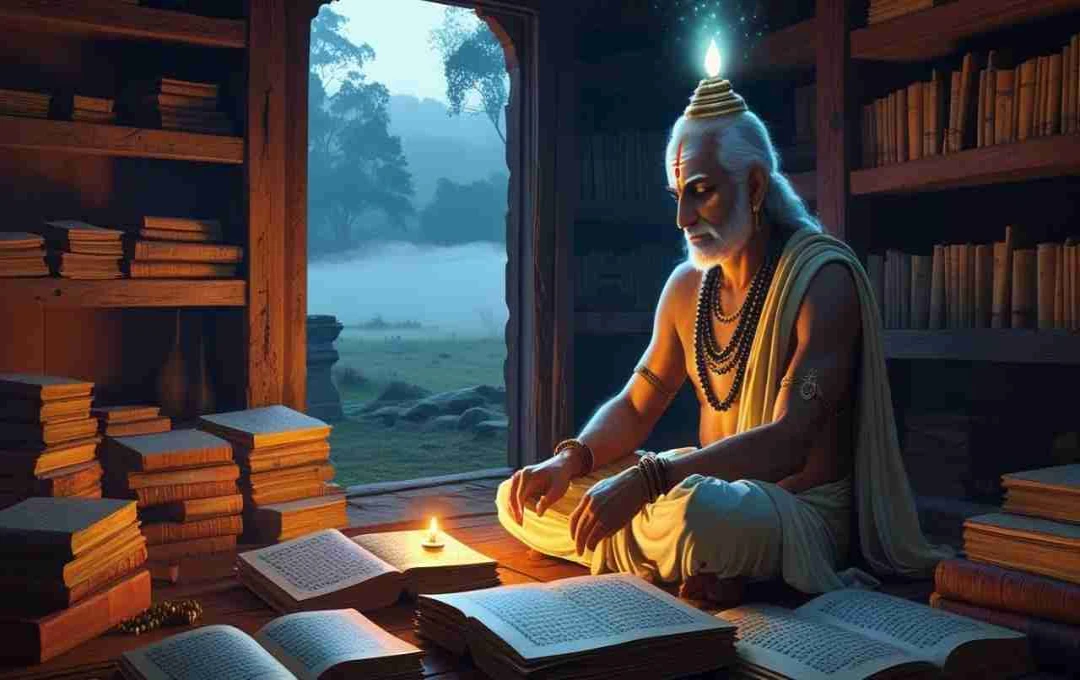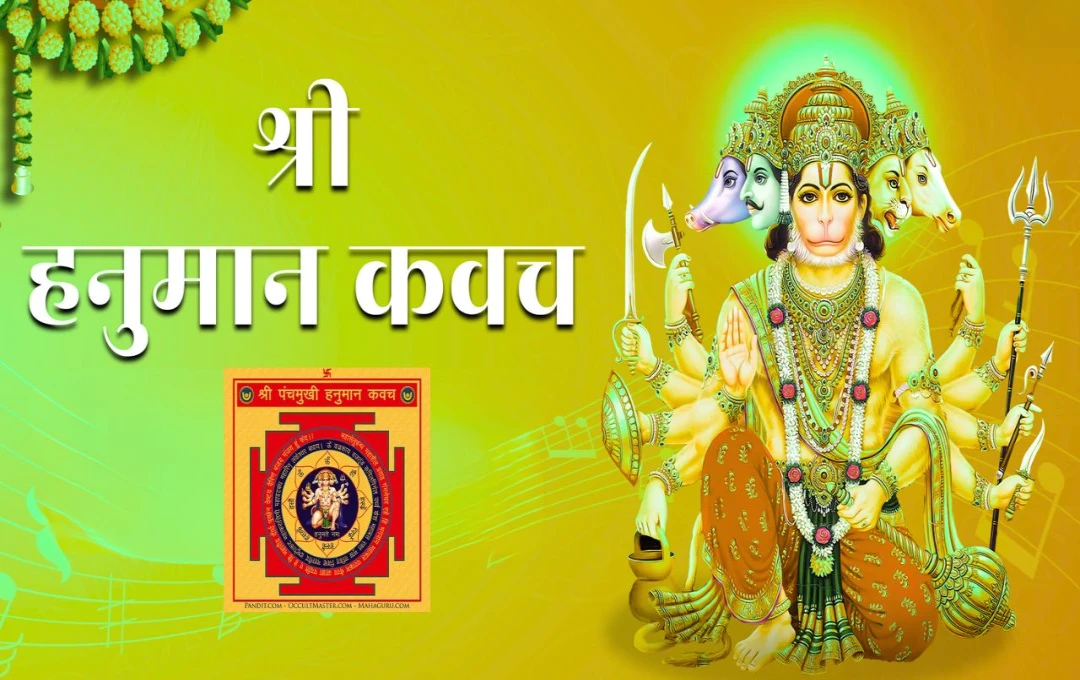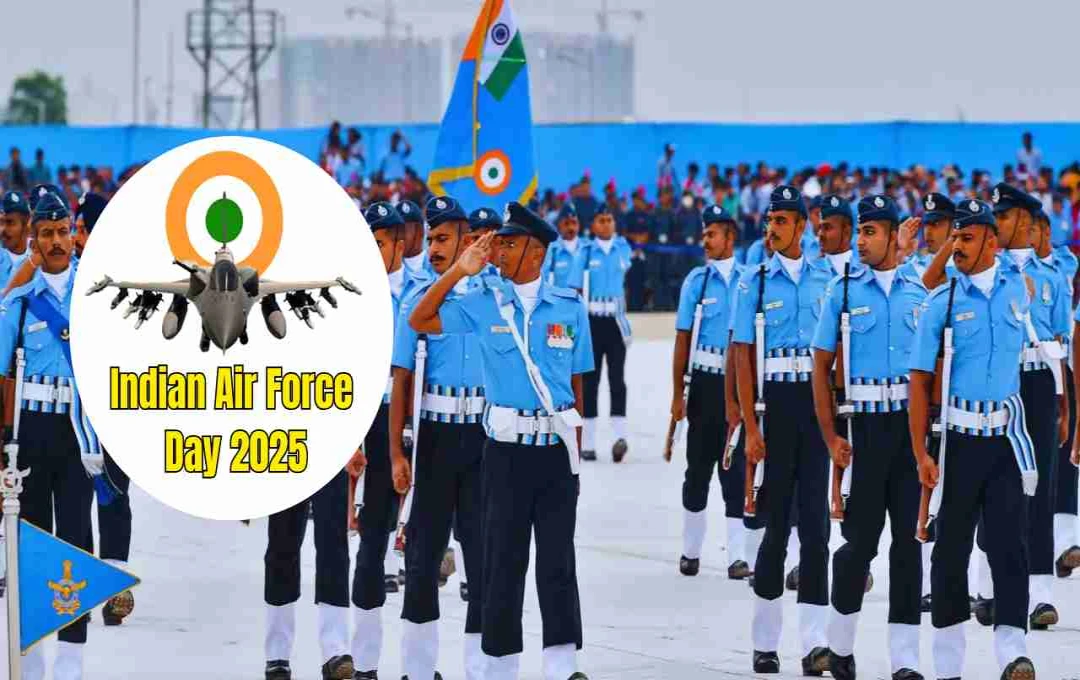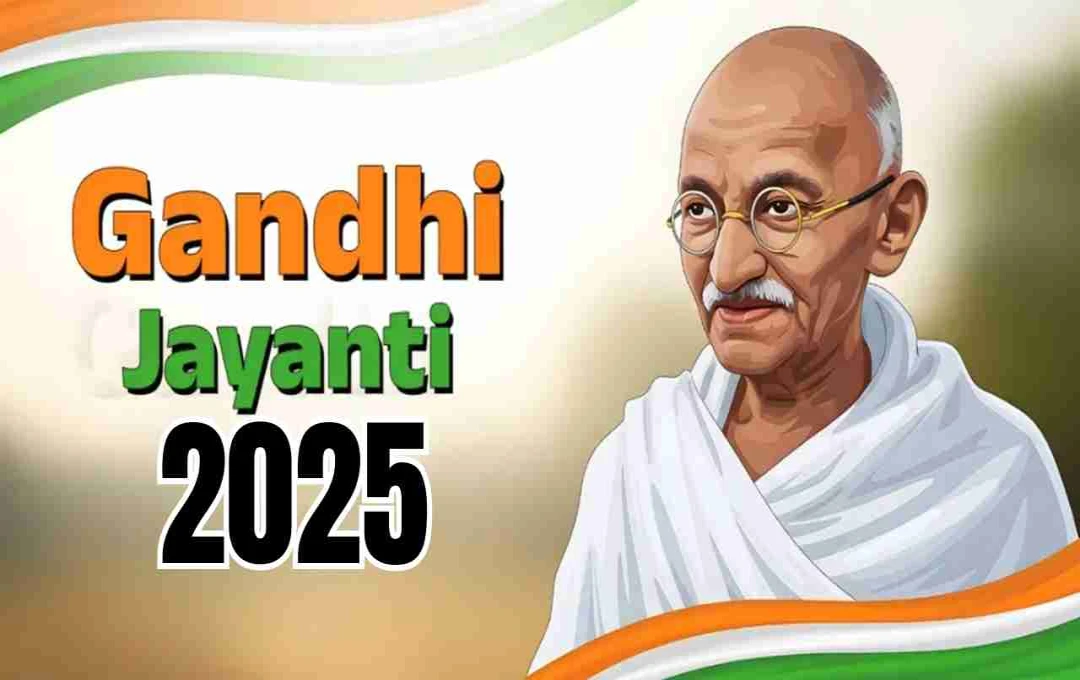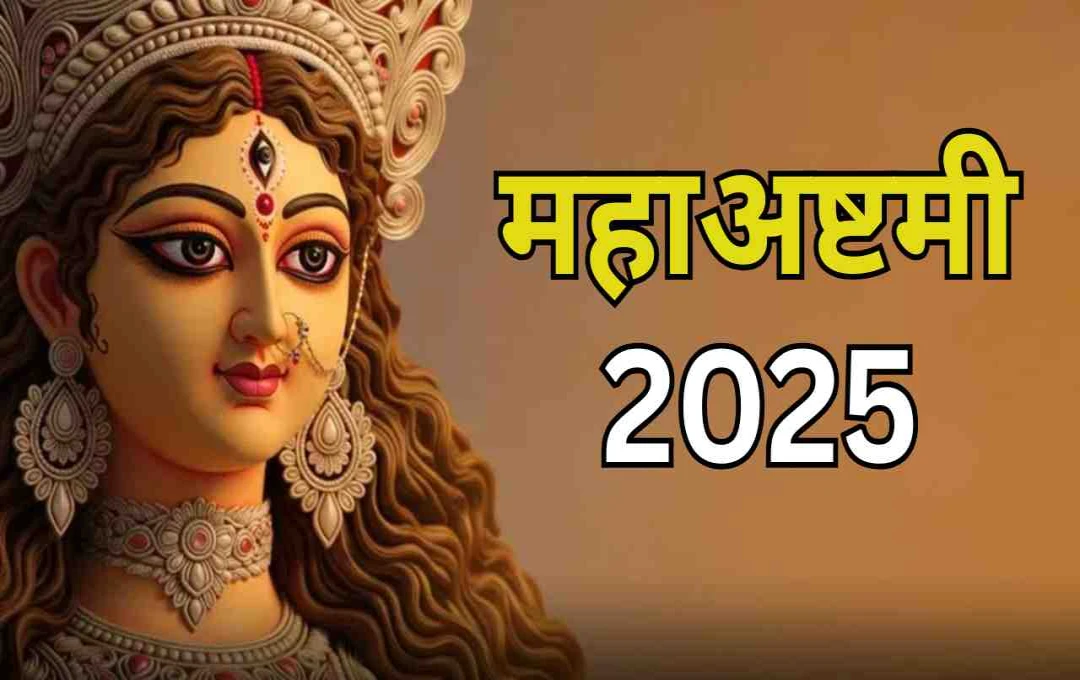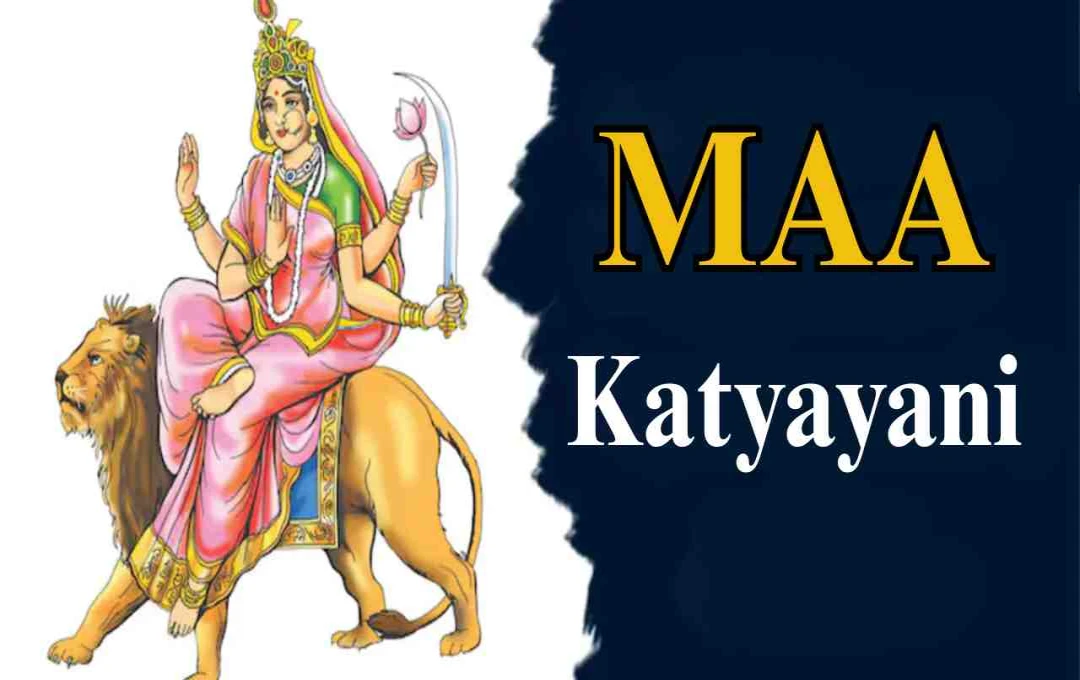Karwa Chauth 2025 is a special occasion for married women, during which they observe a 'nirjala' fast (without water) from sunrise to moonrise for their husband's long life and marital bliss. The fast concludes after offering 'arghya' (water offering) to the moon and sighting it. On this day, the observance of puja, mantras, and traditional rituals signifies women's devotion and family faith.
Karwa Chauth 2025: Married women in India observe the fast of Karwa Chauth, which symbolizes the husband's long life and marital happiness. The fast concludes after offering 'arghya' (water offering) to the moon and sighting it. On this occasion, women observe a 'nirjala' fast (without water) from sunrise to moonrise, prepare their 'puja thali' (prayer plate), and chant special mantras, conveying a message of traditional devotion, love, and faith within the family.
Moonrise and 'Paran' (Breaking Fast) Time 2025
This year, the Karwa Chauth moon is expected to rise at 08:13 PM. At this time, those observing the fast ('vrati') can offer 'arghya' to the moon and break their fast. Adhering to the correct time is important because, according to traditional belief, the fast concludes only after offering 'arghya' to the moon.
Correct Method for Offering 'Arghya' to the Moon
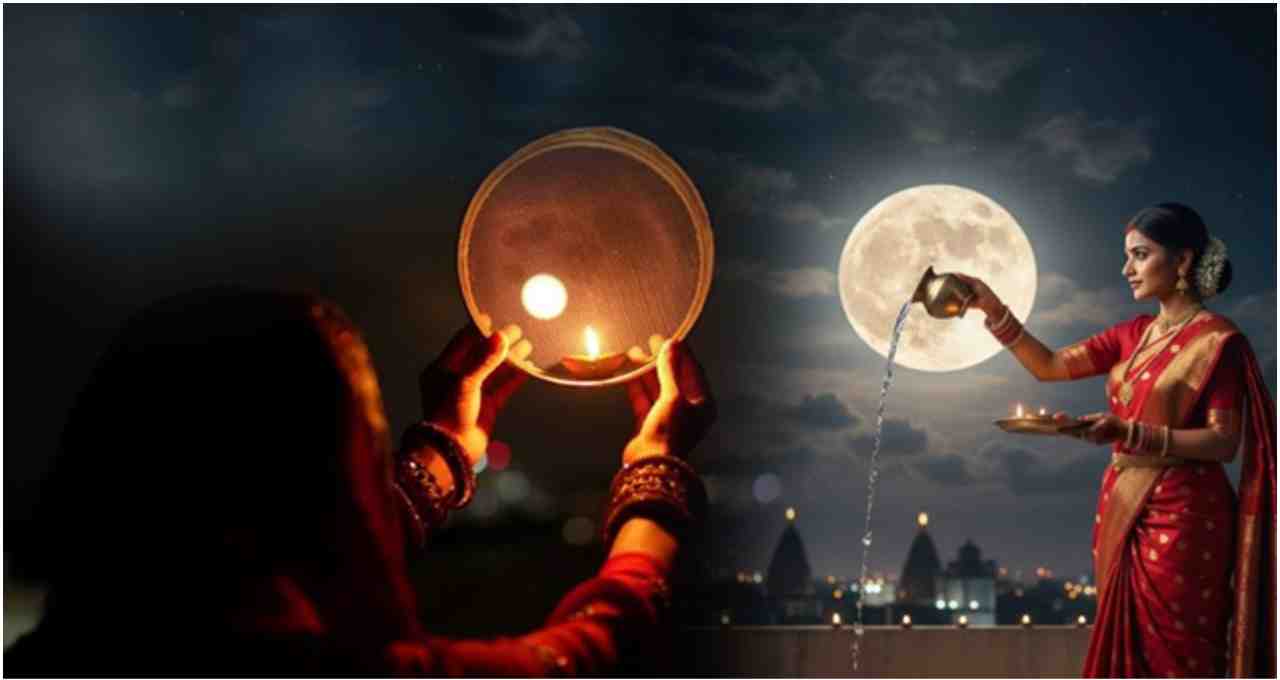
Women observing the fast prepare the necessary items in their 'puja thali'. These include a 'lota' or 'karva' (pot) filled with water, a sieve, 'roli' (vermilion), 'akshat' (unbroken rice grains), sweets, and a lamp (diya).
- First, join your hands and offer respects to the moon.
- Prepare the 'arghya' by adding raw milk, 'akshat', white sandalwood, and some flowers to the water in the 'lota'.
- Place a lit lamp (diya) in the sieve and view the Moon God ('Chandra Dev') through the same sieve.
- While looking at the moon, slowly pour a stream of water and offer 'arghya'. At this time, pray for your husband's long life and marital bliss.
- While offering 'arghya', chant mantras such as 'Om Som Somay Namah' or 'Dadhi-shankh-tusharabham Kshirodarnava-sambhavam. Namami Shashinam Somam Shambhormukuta-bhushanam.'
- Immediately after offering 'arghya', look at your husband's face through the same sieve.
- Finally, break your 'nirjala' fast by drinking water from your husband's hands and seek blessings from the elders of the house.
Note that you should not consume any water or food before offering 'arghya' and before seeing your husband's face. The fast is broken only after this ritual is completed.
Karwa Chauth Puja Mantras
- Om Aim Kleem Somay Namah.
- Om Shram Shreem Shraum Chandramase Namah.
- Om Shreem Shreem Chandramase Namah.
- Om Dadhi Shankhatusharabham Kshirodarnavasambhavam. Namami Shashinam Somam Shambhormukutabhushanam.
- Om Bhurbhuvah Swah Amritangay Vidmahe Kalarupay Dhimahi Tanno Som Prachodayat.
Chanting these mantras makes the puja and 'arghya' offering process sacred and effective.
Significance and Cultural Aspect of Karwa Chauth
The fast of Karwa Chauth is not merely a religious practice; it is also a symbol of emotional connection and dedication between a husband and wife. For years, it has been regarded in Indian culture as an embodiment of women's devotion and family values. The fast is observed not only for the husband's long life and prosperity but also serves as a means to strengthen relationships within the family and society.
From a cultural perspective, Karwa Chauth day signifies the strength and resolve of women. This fast is also a type of social celebration where women celebrate together with their families and community. Through this, women's traditions and cultural heritage are also preserved.
Preparations and Precautions for the Fast
On Karwa Chauth day, women observing the fast wake up before sunrise, take a bath, and prepare the puja area. Arrangements must be made for a clean 'thali' (plate), water, milk, flowers, 'akshat', and a lamp (diya) for the puja.
It is important to maintain self-control during the fast. Observing a 'nirjala' fast can affect physical strength, so water or food is consumed only at the time of breaking the fast ('paran'). Exercising caution regarding health is equally important.
Significance of Conclusion and 'Paran'
The final stage of the fast comes after offering 'arghya' to the moon and sighting it. According to traditional belief, the fast should only be broken ('paran') after this process. At this time, prayers are offered for the husband's long life and marital happiness.
Drinking water from the husband's hands and seeking blessings from the elders of the house after offering 'arghya' signifies the completion of the fast. This entire sequence symbolizes devotion and cultural discipline for women.
